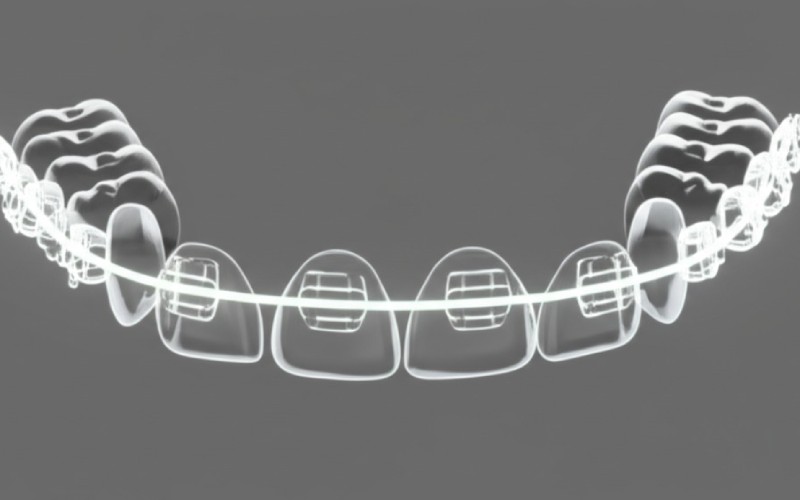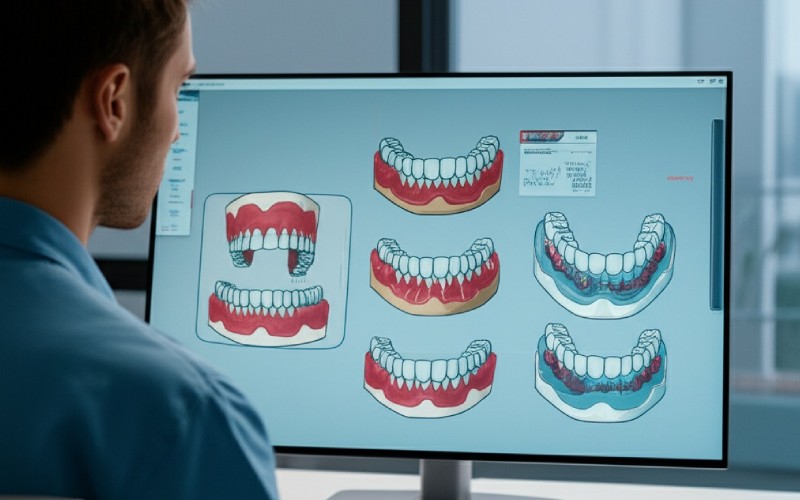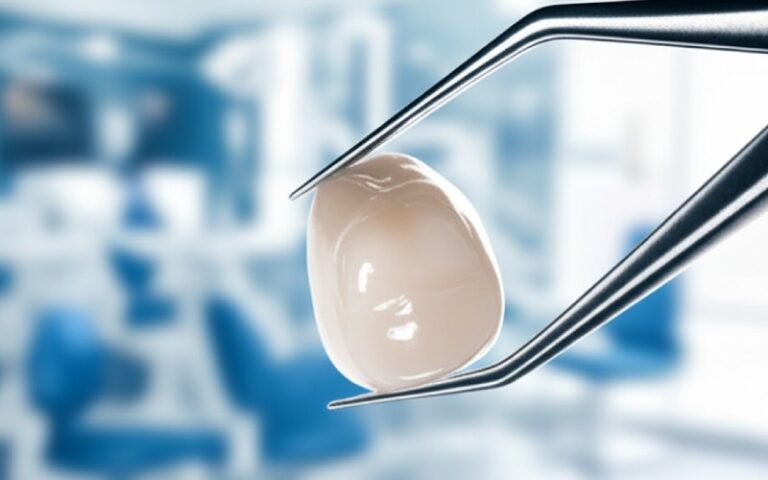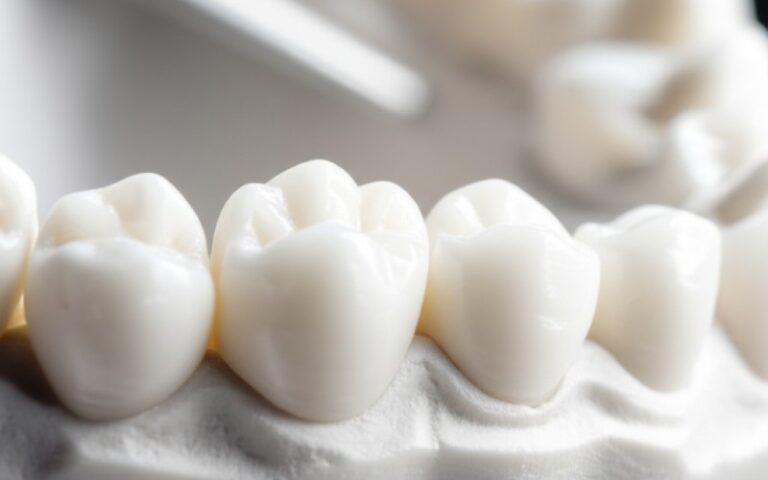
7 Ways to Straighten Your Teeth and Improve Your Smile
Many people who want to improve their smile feel self-conscious about crooked or misaligned teeth. I get it. Your smile is one of the first things people notice. The great news is that you have many choices to fix it. This article will show you 7 ways to straighten your teeth. We will look at everything from a classic brace to modern clear aligners. By the end, you will understand these teeth straightening options better. This will help you have a smart talk with your orthodontist and choose the best path to get a perfect smile.
Table des matières
Why Should You Straighten Crooked Teeth?
Wanting to straighten your teeth is not just about looks. Crooked teeth are harder to clean. This can lead to problems with your oral health, like cavities and gum disease. When your teeth are in the right alignment, it’s easier to brush and floss them well.
Fixing croked teeth is also about comfort and function. A bad bite, or misalignment, can cause problems with your jaw. It can make chewing difficult or even cause pain. When we straighten teeth, we are not just making them look better. We are helping your whole mouth work better. A great smile can also boost your confidence. It’s a wonderful feeling to smile without feeling shy.
Option 1: Are Traditional Metal Braces Still a Good Choice?
Let’s talk about the classic. When you hear the word brace, you probably picture traditional metal braces. Traditional metal braces are still one of the most effective teeth straightening methods available today. These braces consist of metal brackets that are glued to the front of your teeth. A thin metal wire runs through the brackets. Small elastic bands to hold the wire in place.
So, how do braces work? Your orthodontist will tighten the wire at your check-ups. This puts gentle pressure on your teeth. Over time, this pressure will gradually move teeth into their correct position. This treatment option is a real workhorse. It can fix almost any kind of teeth misalignment, from simple to very complex. If you have serious alignment problems, this type of brace is often the best choice to straighten your teeth correctly.

Option 2: What About Ceramic Braces for a More Subtle Look?
Now, what if you need the power of a traditional brace but want something less noticeable? That’s where ceramic braces come in. They work just like braces made of metal. They have a bracket and wire system to move your teeth. But there is one big difference that makes them a popular cosmetic choice.
The brackets on ceramic braces are made from a clear or tooth-colored material. This helps them blend in with your teeth. From a distance, people might not even see them. The braces are smaller and less obvious than their metal cousins. This makes them a great pick for adults and teens who want a more discreet way to straighten their teeth. You get the same powerful orthodontic results but with a much less visible look on the front of the teeth.
Option 3: Can You Really Straighten Teeth with Lingual Braces?
This next option is like a secret agent for your mouth. They are called lingual braces. The word “lingual” means related to the tongue. This brace is custom-made to fit on the back of your teeth, next to your tongue. They are completely hidden from view from the front. No one will know you are undergoing orthodontic treatment unless you tell them.
Lingual braces use the same trusted bracket-and-wire system as a traditional brace. Your orthodontist will place the custom brackets on the inside of your teeth. This makes them a fantastic cosmetic choice. However, because they are custom-made and harder to adjust, they can be more expensive. Some people also find it takes time to get used to the brackets being next to their tongue. But if you want to straighten your teeth in secret, this is a powerful option.
Option 4: How Does Invisalign Straighten Your Teeth Without Braces?
When Invisalign first came out, I was skeptical. Could clear plastic trays really straighten teeth? The answer, I learned, is a big yes. This is one of the most popular ways to straighten teeth without braces. Instead of a brace, you wear a series of custom-made clear aligners. Invisalign is one of the most well-known brands. These aligners that you wear are almost invisible.
The process is simple. Your dentist or orthodontist takes a 3D scan of your mouth. Then, a series of aligners is made just for you. You wear each set for about one to two weeks, then switch to the next one. Each new tray moves your teeth a little bit closer to the final correct position. For the best results, you must wear them for about 22 hours a day. The great part is that they are removable. They are removed for eating and cleaning, which makes life much easier. This is a great choice for mild to moderate alignment issues.
Option 5: What are Dental Veneers and How Do They Work?
Sometimes, people want to improve your smile very quickly. They may have a slightly crooked tooth or a small gap. In these cases, facettes dentaires can be a great choice. It is important to know that this is a cosmetic fix, not an orthodontic one. Veneers do not actually move or straighten your teeth. Instead, they cover up the flaws.
So what are they? Veneers are thin shells, usually made of porcelain, that are bonded to the front of your teeth. Your dentist prepares the tooth, and then the veneer is put on top. They can instantly change the color, shape, and look of your teeth. They are perfect for fixing one or two crooked front teeth or other small issues. It’s a fast way to get a beautiful result, but it won’t fix bigger alignment problems or an unhealthy bite.
Option 6: Can a Retainer Straighten Your Teeth?
You might think a dispositif de retenue is only for after you’ve had a brace. And you are mostly right. A retainer is designed to hold your newly aligned teeth in place. But in some very specific cases, a special type of retainer can be used for minor teeth straightening. This is not a common solution for most people who want to straighten their teeth.
This method works only for very minor teeth adjustments. For example, if one tooth has shifted just a little bit. An orthodontist might create a special removable retainer with springs or clasps. This device will apply gentle pressure to move your teeth back into proper alignment. It’s not a full teeth straightening plan, but for a tiny bit of misalignment, it can sometimes be just what the doctor ordered.
Option 7: What Are Other At-Home Aligner Options?
You have probably seen ads on TV or online for clear aligners you can get through the mail. This market has grown a lot. These companies offer a way for people to straighten their teeth at home. The process often involves taking a mold of your teeth yourself and sending it in. They then mail you a series of aligners, much like braces or Invisalign in function.
I always tell people to be very careful with these options to help them achieve a straighter smile. While they can be cheaper, they often lack the direct supervision of a dentist or orthodontist. A professional needs to check your oral health, your upper jaw alignment, and make sure you have enough space in the mouth for teeth to grow or move. Moving teeth is a medical procedure. Doing it without a professional can lead to problems or even damage to your teeth. Always talk to a dental expert first.
How Do You Choose the Best Teeth Straightening Method for You?
With all these options available, how do you pick the right one? The first and most important step is to talk to a professional. Your orthodontist or dentist will look at your teeth, your bite, and your overall oral health. They will tell you which teeth straightening options will work best for your specific misalignment.
Think about your lifestyle, too. Are you okay with a visible brace? Or do you want something hidden, like lingual braces or clear aligners? Also, consider your budget. Traditional braces are often the most affordable, while other orthodontic treatments can cost more. Thinking about these things will help you and your dentist find the perfect treatment option to align your teeth.

What Happens After Your Orthodontic Treatment?
You did it! You finished your treatment with braces or aligners. Your teeth are finally straight. But your journey to a lasting straighter smile is not quite over. I’ve seen people get a perfect result, only to have their teeth shift back because they forgot one crucial step: wearing their retainer.
After your orthodontic device is removed, your teeth will want to move back to their old spots. A retainer is a custom device that holds your teeth into alignment. Some are removable, and some are bonded to the back of your teeth. Your orthodontist will tell you how often to wear it. Wearing your retainer as directed is the key to keeping the straight teeth you worked so hard for. It protects your investment and ensures your smile stays beautiful for years to come. This is the final step to ensuring proper alignment.
Ce qu'il faut retenir
Here is a quick summary of the 7 teeth straightening options we discussed:
- Traditional Metal Braces: Very effective for all types of misalignment.
- Ceramic Braces: Work like metal braces but are less noticeable.
- Lingual Braces: Completely hidden because they are on the back of your teeth.
- Invisalign/Clear Aligners: A nearly invisible and removable option for many cases.
- Dental Veneers: A quick cosmetic fix for minor flaws, not a true straightening method.
- Retainers: Can be used for very minor teeth adjustments in some cases.
- At-Home Aligners: A newer option that should be approached with caution and professional advice.
- Always consult a dentist or orthodontist to find the best teeth straightening options for you.




